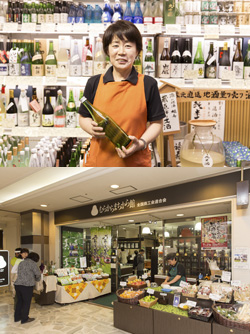Shopping Spot Murakara Machikara Kan: Discover Traditional Japanese Preserved Food
Nov 12,2014
Shopping Spot Murakara Machikara Kan: Discover Traditional Japanese Preserved Food
Nov 12,2014
[Please note that Murakara Machikara Kan has closed its doors since the original publication of this article.]
People in every part of the world have developed clever ways to preserve food to avoid wasting valuable produce and in preparation for seasons when fresh food is scarce and for unforeseen events.
Fresh fruits and vegetables, seafood, meat, and other perishable foodstuffs are turned into preserves using a variety of techniques, such as fermenting, drying, and smoking. Through these means, preserves come to embody the food culture of a region or nation.
This series is a journey that explores the mastery of preserves and the wisdom of everyday living, which form the foundation of food cultures. For this ninth installment, we visited Murakara Machikara Kan, a store in Tokyo that features a large assortment of specialty foods from all over the country.

▶Okinawan preserved foods: Traditional Japanese Preserved Food
▶Dried vegetables: Traditional Japanese Preserved Food

Murakara Machikara Kan — which literally means the From Village From Town Emporium and is located on the first floor of the Tokyo Kotsu Kaikan building near the Kyobashi exit of JR Yurakucho train station — offers a tremendous selection of some 1,200 specialty foods from all 47 prefectures. As Japan’s most comprehensive store specializing in regional foods, it is always packed with shoppers.
Chief buyer Yamauchi Yoko explains the store’s popularity. “We get all kinds of customers here. People living in Tokyo who come in to buy old familiar specialties from their hometowns as well as travelers to Tokyo from Japan and abroad who come in looking for souvenirs.”
The breadth of the store’s merchandise is incredible, ranging from sections for seafood, dried foods, and pickled goods to diary and livestock products, local saké, seasonings and groceries, confectionaries, and more. Touring the aisles is like a pleasant trip around the country.
Among the classic products lining the shelves are many preserves made from local ingredients that have been dried, pickled, roasted, or otherwise processed in creative ways. For this article, we took it on ourselves to select preserves from 24 prefectures, which surprisingly totaled only a little over 10,000 yen. Shopping here feels like a fancy treat for your stomach and your mood.
Hokkaido and Tohoku region — lower left photos (prices do not include tax)
Rumoi, Hokkaido — Mushiri hokke [smoked Okhotsk Atka mackerel] (446 yen) … smoked fatty Okhotsk Atka mackerel caught in the coastal waters of Hokkaido. Perfect with a drink or as a snack on its own.
Minamisoma, Fukushima — Bekko onion [amber onion] (431 yen) … this item consists of a whole onion that has been marinated in a soy-sauce flavored broth. Its mild flavor is contrasted nicely by a crunchy texture.
Ogachi District, Akita — Tokusen iburi daikon zuke [carefully selected smoked and pickled radishes] (586 yen) … a specialty from inland Akita, famed for its heavy snowfalls in winter. In days long ago, people would hang daikon radishes above the household hearth to smoke them before pickling. Few homes nowadays have an open hearth, so most people get their iburi daikon zuke from pickle shops. Nevertheless, this one-of-a-kind flavor is still going strong.
Sakata, Yamagata — Instant Shonai-fu [instant Shonai dried gluten] (350 yen) … dried gluten shaped into thin sheets is a specialty of the Shonai region in Yamagata. Crunch up the sheets and put them in miso soup or lightly fry them in oil and sprinkle on a little salt to make a quick snack.
Kurihara, Miyagi — Medium-grain Kawaguchi natto [fermented soybeans] (89 yen) (top right photo) … one of Murakara Machikara Kan’s most popular products, it uses domestic medium-grain natto, which is easy to eat thanks to its mellow taste and aroma.
Kanto and Tokai regions — lower right photos
Tagata District, Shizuoka — Minami Hakone mozzarella cheese (580 yen) … features a light, creamy taste. Create a sensational hors d’oeuvre by serving it with tomato, seasoned with salt, pepper and olive oil. The cheese also tastes fantastic on pizza or toast.
Kanra District, Gunma — Smooth tasting sashimi konnyaku [Konjac sashimi] (370 yen) … this delicacy’s sponginess and throaty velvetiness make it a refreshing treat. It tastes even better when chilled (and topped with mustard vinegared miso).
Katori, Chiba — Loin roll ham from Koisuru-Buta Laboratory (420 yen) … the pork is slowly cured for 14 days. Its subtle sweetness comes from salt produced at Kujukuri Beach.
Oshima, Tokyo — Genuine Oshima kusaya [brined, pungent fish] (558 yen) … dried fish with an overpowering smell but bursting with umami. A specialty of the Izu Islands, kusaya is made by infusing such species as amberstripe scad, flying fish, or mahi-mahi in kusaya brine, a fermented liquid similar to fish sauce. This particular product is made with mackerel scad. Try a bite — you might just become hooked!?
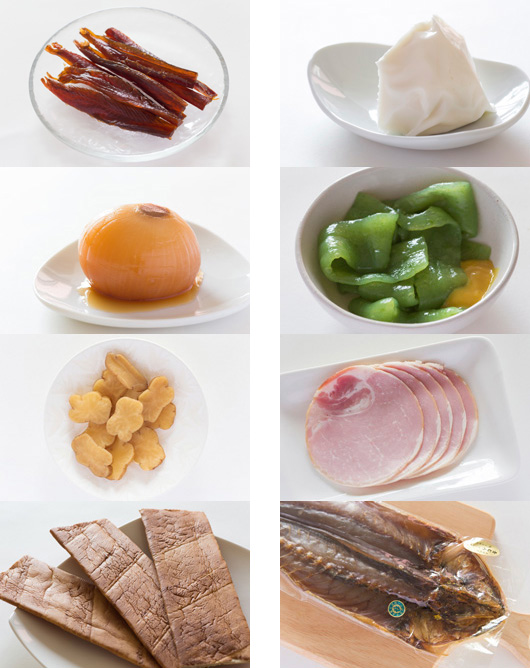
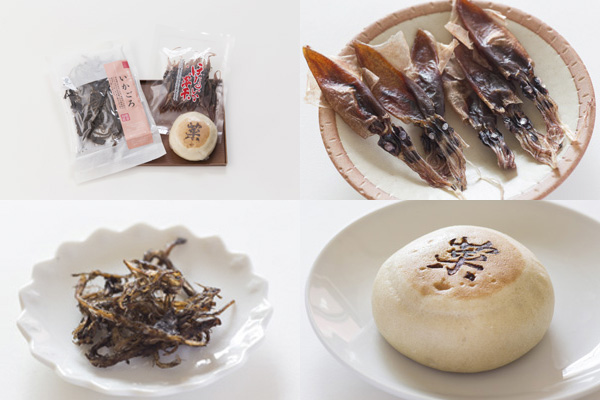
All products on offer at Murakara Machikara Kan are made by SMEs in the corresponding region, using locally produced ingredients to ensure the healthiness and safety of their goods.
“People find a lot of ‘what’s this?’ surprises in here, like yama-uni tofu [tofu marinated in miso] that tastes like cheese. There are many fish that people can’t name as well. Local food cultures run very deep.”
The store stocks around 200 rare and valuable saké labels from small local producers all over the country. The extremely popular centerpiece of the collection is the pure undiluted saké drawn directly from 18-liter tobin barrels.
“The most popular section is the regional-aid produce shelves next to the main entrance. Here we stock seasonal vegetables and fruits shipped directly from areas recovering from natural disasters and communities struggling with depopulation. Many customers pop in and pick up a few items on their way home from work.”
Murakara Machikara Kan is a must-see Tokyo wonder. Once you step into the store, it’s impossible that you leave empty handed.
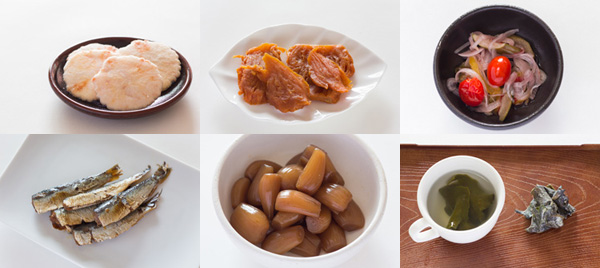
Kinki and Chugoku regions
Arida, Wakayama — Delectable shrimp crackers (329 yen) … these shrimp crackers rich with just-roasted flavor are made with potato starch from Hokkaido and fresh shrimp landed at Minoshima port.
Shima, Mie — Kinko dried potato (454 yen) … these snacks are made by aging and drying hayato sweet potatoes produced in Ise-Shima. They have a soft and sticky texture with a bold sweetness.
Kameoka, Kyoto — Passion pickles in seven colors (371 yen) … what bright colors! These Japanese-style pickles include cherry tomatoes, red and yellow bell peppers, red onions, celery, and more. Their refreshing aftertaste will definitely linger with you.
Okayama, Okayama — Yaki Mamakari no Su Zuke [grilled Japanese sardinella pickled in vinegar] (399 yen) … Sappa, or Japanese sardinella, a close relative to herring, is an Okayama specialty. The moniker mamakari apparently comes from the expression “it’s so delicious that you go out to kari (borrow) mama (rice)”.
Tottori, Tottori — Sakyu [sand dune] shallots pickled in tamari soy sauce (457 yen) … pickles made with shallots grown in the Tottori sand dunes. They are piquant, with a crisp crunch.
Izumo, Shimane — Mekabu tea (360 yen) … Mekabu is the name for the roots of wakame seaweed. Adding hot water to dried mekabu releases the fragrance of the sea. Reconstituted mekabu is delicious to eat as is and can be used in soups and vinegared dishes.
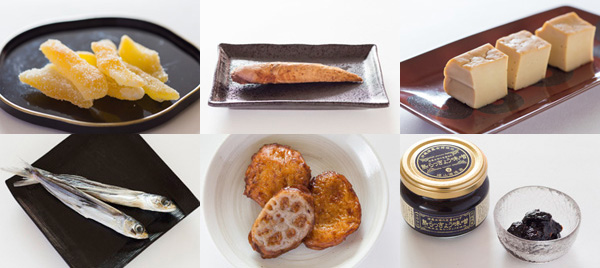
Shikoku and Kyushu regions
Shikokuchuo, Ehime — Candied summer mikan [Japanese mandarin] (432 yen) … summer mikan are grown in the mild climate of Setouchi. Once candied, they have a soft texture with modest sweetness.
Tosashimizu, Kochi — Souda bonito (141 yen) … made with fresh souda bonito caught off the coast of Tosashimizu Ashizuri, known for the Kuroshio current. Each piece is slowly grilled over an open flame. The treat can be eaten as a snack or nibble or be broken up and used as a topping for salads, pasta, and other dishes.
Kuma District, Kumamoto — Tofu pickled in miso (350 yen) … legend has it that when the defeated warriors of the Heike clan hid in mountain villages to escape the pursuit of the Minamoto clan, they preserved tofu by soaking it in miso. Japanese cheese is a fitting description for its taste.
Hirado, Nagasaki — Ago (614 yen) … Ago is dried flying fish caught in the waters near Hirado. When grilled over a low flame and then lightly pounded, the meat becomes tender and easy to eat.
Nishinoomote, Kagoshima — Deep-fried fish cake (235 yen) … this deep-fried fish cake is made with Pacific cod, lizardfishes, and other species caught near Tanegashima Island. Enjoy it for the rich, fishy flavor.
Kunigami District, Okinawa — Okinawan shallots in miso (503 yen) … this miso base is shallots produced in Okinawa. It is a perfect addition to rice and useful as a seasoning as well.
▶Okinawan preserved foods: Traditional Japanese Preserved Food
